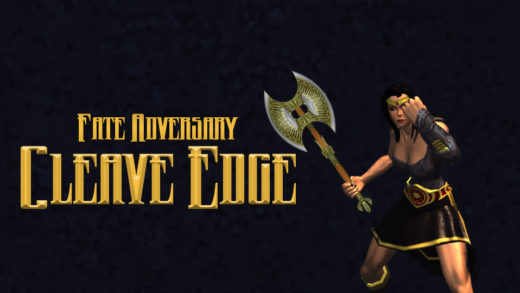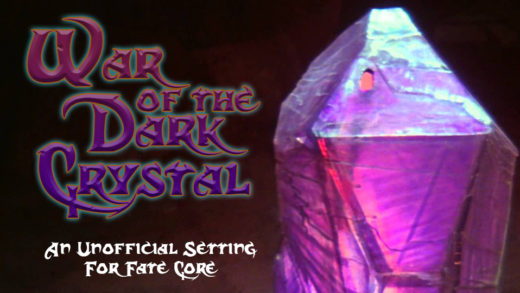In many RPG genres, draft animals are an important and daily part of life. Creatures like horses, mules, oxen, and elephants are often seen as part of the background—if considered at all. There are many opportunities, however, to provide challenges to the players utilizing the working animals around them. This post relates to my previous Animal Companions post, but in a more specific context.
Skittish
Working and riding animals are typically prey animals, rather than predators. These animals have a natural instinct to be sensitive and wary, ready to buck or bolt at any potential alarm; even when the surprise is as simple as a leaf falling. The most well-trained horses, camels, and elephants can still react suddenly, giving the rider mere nanoseconds to calm or refocus the animal. Dealing with this type of reaction should not be a constant “animal handling” (or equivalent) roll, but throwing it in for flavor every so often can remind the players that their transportation is a live creature. And failure of such rolls can lead to the party discovering something new and unexpected, as their mount reacts to some minor surprise and stops in an off-path location.
Stubborn
Like being skittish, beasts of burden can be seen as stubborn, refusing to go somewhere. In novels and gaming, this device is often used as a way to indicate something dangerous ahead. This is certainly a valid and important trope to make use of. But animals may not be reacting to danger, it may be something innocuous to the party that causes the creature’s alarm. Captive elephants have been know to refuse to go out on exhibit because of a duck or squirrel that is already occupying it. Having an animal react stubbornly in equal parts due to real danger or a nonexistent one can change the way players react when an animal is stubborn; they may not always err on the side of caution.
Care and Maintenance
Mounts and pack animals are living creatures and require constant care and maintenance. This may often seem like busy-work to players, but if no one is taking care of the animals, then they will no longer live up to their potential and, given time, no longer live. If the character party has only one dedicated member maintaining the group’s animals, that potentially impedes on the character’s sleep—especially if there are other nightly tasks (like taking watch) they must also perform. While the care and maintenance may be a chore, it can also serve as a way for the animal(s) to bond with their caretaker, perhaps showing the caretaker preference over their rider.
The above three situations are primarily resolved with standard (unmodified) “animal handling” or similar skill rolls. I’ve seen that skill often be ignored in favor of more combat-oriented skills, sometimes by the entire group. Reminding players that they should have skills that reflect their daily life is important and sometimes the re-introduction of animal handling can soon have players taking craft skills (to repair their clothing or armor) or mercantile skills (to get better prices on gear) that were previously ignored.
Stampedes
A stampede could occur at any time in the wild; most draft animals are also herd animals and the previously mentioned skittishness can cause the collective groups to run. Once that running begins very little can stand in their way. While some may think solely of cattle stampeded, the act of stampeding can also be associated with horses, elephants, gazelle, wildebeests, walruses, and rhinoceroses. An stampede can force the characters to move to different territory quickly or face the oncoming wall of animals. Another option is for the player characters to drive or herd beasts and have to deal with their alarm. It may also be that the cause of the stampede isn’t natural or is purposeful and investigations may reveal a villain or similar reprobate.
Prey
Working animals are typically prey animals, which means that they may be targets to predators. While many predators may attack while the characters are awake and in motion, desperate animals (or monsters) will take on the potential challenge for their own survival. Mounts and pack animals are often put at the edge of camp and may be victims to predators in the middle of the night. For dungeon-delving groups, mounds may be left at a dungeon’s entrance, leaving their animals as unwitting targets.
Exotic and Fantastic
It may be that the campaign takes the characters to strange and foreign lands, where mounts and beasts of burden are not the animals that they’re used to. While camels and horses may share a similar role, they are not a closely related (the camels’ closest living relatives are llamas and alpacas); as such their handling may be subtly different and unexpected. This can be an even greater challenge for the characters if the animals they are used to dealing with have their roles served by a different class or phylum. Characters who are forced to suddenly mount and ride an ostrich will be little prepared for how to handle, care, and maintain the birds if they are used to horses. In a fantasy or sci-fi world, those challenges can be increased or altered by beasts of burden being predatory animals. Reptilian mounts are popular in Star Wars, as both the Dewbacks of Tatooine and Tauntauns of Hoth were both lizards. He-Man and many D&D images convey characters riding large felines. For such creatures the challenges these beasts of burden will be turned on their head completely—especially if the characters are used to handling prey animals as mounts.



Recent Comments